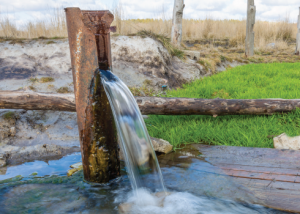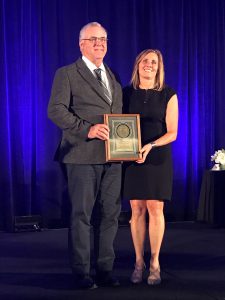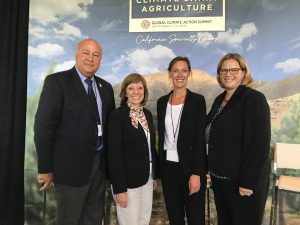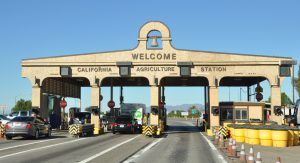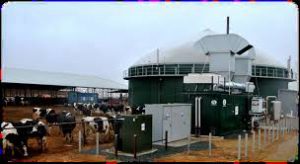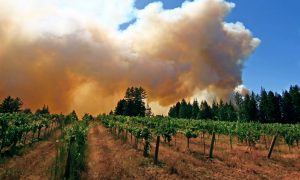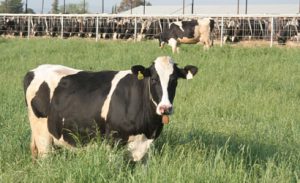
In December of 1996 and January of 1997, a series of subtropical pineapple express storms washed over California. Watersheds were already saturated when the storms brought more than 30 inches of rain, making it one of the wettest Decembers on record. Widespread flooding ensued—levees failed and rivers overflowed.
Recognizing a need to respond and be proactive, a committee of dairy producers, government agency representatives, industry leaders, and university specialists gathered to create the California Dairy Quality Assurance Program (CDQAP), ensuring high-quality milk production and continuous improvement in environmental stewardship. It was also a prime opportunity to demonstrate the commitment of the California dairy industry to producing high quality, safe products, in an environmentally friendly, animal-care conscience manner. Initial funding was provided by the California Farm Bureau Federation, California Department of Food and Agriculture and the California Dairy Research Foundation (CDRF). Dr. Michael Payne, a University of California veterinary researcher, was brought on board to direct the program, and Dr. Deanne Meyer, University of California Cooperative Extension specialist, was enlisted to develop educational programs. Continued CDRF funding provided an important direct tie to dairy producers through check off dollars, and industry expertise.
TRUST FOSTERS SUCCESS
In 1998, the CDQAP began delivering environmental stewardship workshops and finalized an Environmental Stewardship Partnership Agreement with 14 academic, regulatory and industry signatories. It was an unprecedented collaboration, building a bridge between science, regulation, and production. The agreement brought together multiple state and federal agencies, the University of California and the dairy industry to address environmental issues and ensure dairy producers had the tools they needed to comply with regulations.
“The trust fostered 20 years ago in those early meetings between industry, regulatory agencies, and academia is still the foundation of our program partnership today,” said Denise Mullinax, assistant director, CDQAP and interim director, CDRF. “CDQAP works to provide dairy producers with the tools they need to not only gain regulatory compliance but to make ongoing improvements and show consumers that this industry is serious about sustainability—which means environmental stewardship, food safety, and animal well-being—while maintaining economic viability for the long-term”
For 20 years, CDQAP has been on the front lines, much of it in grassroots-style, educating and training farmers. As new water and air quality requirements for dairies evolved, the CDQAP traveled around the state to train farmers. When dairy producers nationwide launched a new animal care verification program, the CDQAP provided California producers with education and tools to support participation. When agro-terrorism and biosecurity became a threat, the CDQAP helped dairy producers and processors prepare and protect their products. When animal disease outbreaks occurred in other parts of the world, the CDQAP helped California producers understand the threats and prepare to respond if needed.
To date, nearly 800 dairy farms in California have received CDQAP environmental certification. Certifying producers must complete three program components: environmental stewardship education, farm management planning and reporting, and an on-site third-party evaluation.
In a 2004 news article about the successes of CDQAP, Ria de Grassi, then California Farm Bureau Federation director of livestock, animal health and welfare, said, “Certification requires producers to meet a high standard of protecting the environment. That high standard gives credibility to the program and, by extension, to the certified producers. That’s a win-win outcome.”
ONE-OF-A-KIND, ONE TO BE TRUSTED
The program was, and still is, one-of-a-kind — a unique, public-private collaboration that continues to produce large-scale results. In 2007, the program received the Governor’s Environmental and Economic Leadership Award (GEELA), California’s highest and most prestigious environmental honor.
Link to full story on CDQAP web site
Link to CDFA’s Dairy Digester Research and Development Program (DDRDP) and Alternative Manure Mangement Program (AMMP)
